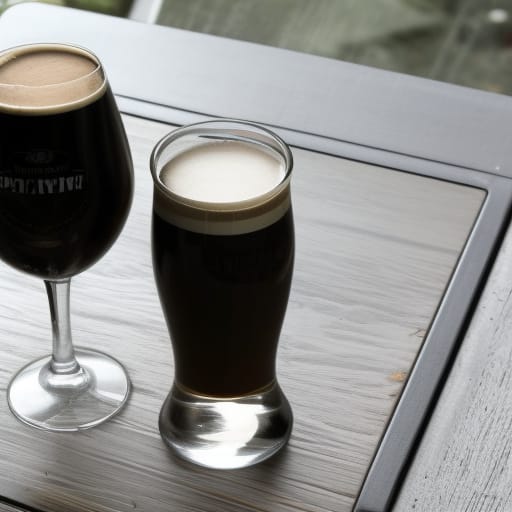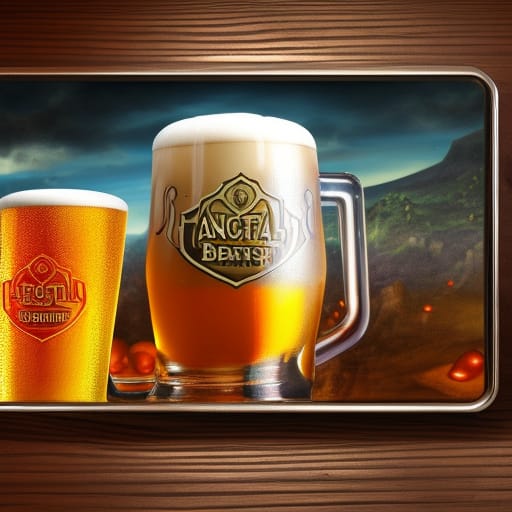Essay> The Broad Spectrum of Beer: From Ales to Lagers and Beyond
Essay> The Broad Spectrum of Beer: From Ales to Lagers and Beyond
Dive into the diverse universe of beer, and discover the fascinating differences that distinguish your favorite brews!
This guide provides a comprehensive overview of the varied world of beer, categorizing the beverage into its key types and explaining the unique brewing processes, ingredients, and traditions that differentiate each one. The exploration starts from the two primary beer categories—Ales and Lagers—and delves deeper into their respective subcategories, shedding light on styles like Pale Ale, India Pale Ale, Pilsner, and Stout, among others. The explanation further touches upon the concept of craft beer, demystifying it as more a representation of the brewery's size and independence than a specific beer style.

There are several types of beer, each with distinct characteristics that result from differences in ingredients, brewing processes, and traditions. Here's a brief overview:
1. Beer:
This is the broad term for all types of fermented beverages made from cereal grains, typically barley, but also wheat, corn, rice, and others. Beer is typically classified into two main types: Ale and Lager.
2. Ale:
Ales are beers fermented with top-fermenting yeast (Saccharomyces cerevisiae) at relatively warm temperatures. This category of beer is generally characterized by a wide range of potential flavors, aromas, and textures due to the characteristics of the yeast and the ingredients used. Ales can be further divided into numerous subcategories, including but not limited to the following:
Pale Ale: These are generally hoppy beers that are pale in color. They originated in England and can range in taste from lightly floral to robustly bitter. The name refers to the pale malt used in brewing.
India Pale Ale (IPA): This is a hoppier, stronger version of a Pale Ale. IPAs were originally brewed with extra hops and alcohol to survive the long journey from England to India during the British colonial era. There are various styles of IPAs today, including English, American, and Double or Imperial IPAs, each with different flavor and strength characteristics.
Stout: These are dark, almost black beers with strong flavors of roasted malt, chocolate, and sometimes coffee. They are typically thick and rich. The most famous example is Guinness.

Stout
Porter: Porters are also dark ales, similar to stouts, but usually with a slightly lighter body and flavors. The exact distinction between stouts and porters can be a point of contention among beer enthusiasts.
3. Lager:
Lager beers are brewed with a bottom-fermenting yeast (Saccharomyces pastorianus) at cooler temperatures than ales. This results in beers that are generally smoother, crisper, and cleaner in flavor. Like ales, lagers also have several subcategories:


Lager
Pilsner: Originating from the Czech Republic, Pilsners are a type of lager known for their golden color, clarity, and high hop flavor and aroma. They're generally light and refreshing.
Helles: A German style of lager, Helles are typically malt-forward, pale, and low in bitterness.
Dunkel: Another German lager, Dunkels are darker and have a strong malty flavor often with notes of caramel, nuts, and chocolate.
Bock: Bocks are strong lagers that originated in Germany. They can range in color from pale (Maibock) to very dark (Doppelbock). They are typically rich and malty, with varying levels of hoppiness.
4. Craft Beer:
This term refers more to the size and independence of the brewery than the beer style itself. A craft brewery is a small, independent, and traditional brewery, as defined by the Brewers Association in the U.S. Craft beers can be of any style, but they are often associated with innovative and experimental brewing techniques and flavors.

Craft Beer
5. Lager Beer:
This is just another name for Lager and can include any of the subcategories listed above.
6. Specialty and Hybrid Styles:
Beyond these primary categories, there are numerous specialty styles and hybrid styles that blend characteristics from different categories. For instance, Belgian styles like Saisons, Trappist ales, or Lambics; wheat beers like Hefeweizens or Witbiers; and hybrids like Kölsch (fermented like an ale but matured like a lager) or California Common (aka Steam Beer, made with lager yeast but fermented at ale temperatures).
The world of beer is vast and diverse, and these categories only scratch the surface. Each style has its own history and range of flavors and aromas to explore.


